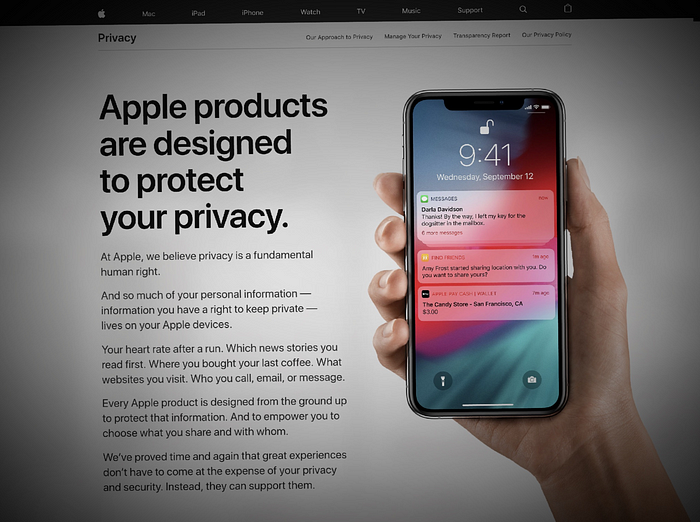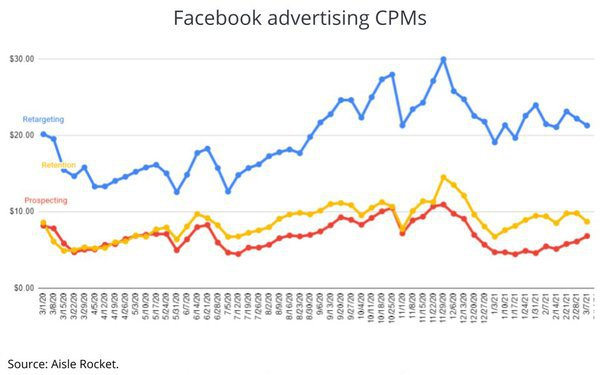
After Apple’s privacy overhaul made it more difficult to follow iPhone users and target them with appropriate marketing, e-commerce companies are paying greater fees for digital advertising. According to a new analysis by ad-tech company Moloco, the rising prices of mobile ads would force online retailers to look for new ways to boost campaign performance.
Apple began flashing a pop-up window on iPhones in April, prompted by online privacy concerns, asking customers to accept to be monitored by applications — a feature known as App Tracking Transparency (ATT). According to the survey, the percentage of tracked users plummeted from 73 percent at the start of 2021 to 32 percent by the end of June as a result of numerous people opting out. During the six-month period, the average cost of conversions for e-commerce marketers increased by 200 percent for tracked users and 155 percent for non-tracked users. These trends are likely to continue, especially as ad spots become more competitive, especially for the smaller percentage of customers who consent to tracking.

Anurag Agrawal, vice president of product at Moloco, said, “ATT has had a seismic influence on the landscape of mobile advertising.” “It’s become more difficult to find the right users as a result of Apple’s modifications. Targeting has become more inaccurate, resulting in increased acquisition expenses for a specific user.”
The increasing costs for e-commerce marketers come at a time when they’re competing for consumer attention amid a surge in online buying since the outbreak last year. According to the Census Bureau, e-commerce sales increased 9.1% year over year to $222.5 billion in the second quarter, accounting for nearly 13% of total retail sales in the United States. According to consulting firm Deloitte, this strength is expected to continue into the holiday season, with sales rising as much as 15% from 2020 to $218 billion, though this growth will be faster than total retail sales, which could rise as much as 9% to $1.3 trillion due to improved consumer sentiment.
Unprecedented interruptions
As the epidemic continues to affect consumer behavior, Apple’s privacy restrictions have added to the uncertainties that marketers face this year. Despite unveiling the updates to iPhone’s iOS software at its developer conference in mid-2020, Apple decided to postpone the deployment due to widespread criticism.
Simultaneously, Facebook, whose revenue is primarily derived from mobile ads, criticised Apple’s update and warned of its harmful consequences. The social media behemoth stated that the change would exacerbate the agony for small businesses attempting to recover from the pandemic by making their efforts less effective, as well as anger customers by showing them adverts that were irrelevant to their interests. According to The Verge, Facebook is one of the organizations that has been forced to adjust to Apple’s privacy upgrade, and has tasked “hundreds of developers” with developing ways to target advertising without relying on personal data. Nonetheless, the adjustments have caused havoc for Facebook, which recently admitted to underreporting ad performance on iPhones.
In the midst of these upheavals, Moloco proposes that e-commerce marketers change their strategy to boost ad performance and avoid wasting money. Diversifying traffic sources is a vital strategy for determining the most effective strategies for reaching customer acquisition goals.
“There are schools of thinking that these changes will have a greater impact on firms like Facebook and Google, so it’s critical for marketers to test alternative channels to see which performs best for them,” Agrawal said. “With the landscape shifting, experimentation is critical — the world is very different now than it was six months ago.”
“With the landscape shifting, experimentation is critical — the world is very different now than it was six months ago.”
Marketers should set aside money for campaigns that maximize return on ad spend (ROAS) while keeping an eye on CPA trends, which can shift quickly. CPA rates have altered as a result of Apple’s software changes, according to Moloco. Unlike the April release of iOS 14.5 that prompted an automated update, the June release of iOS 14.6 prompted more Apple users to review their privacy settings.
Contextual targeting — or inserting adverts among digital content that is relevant to a specific consumer group — is becoming more popular as audience tracking becomes more challenging.
“You used to have a deterministic indicator of who the person is now,” Agrawal explained. “With fewer user-level indications, you have to rely more on contextual cues to determine whether this is the appropriate location for an ad.”
His firm advises e-commerce marketers to think about their overall campaign goals and how mobile advertising fits into their conversion strategy.
According to Moloco’s study, “although CPA pricing continue to fluctuate, make sure you’re operating ads that target big-picture gains.” “Otherwise, you risk getting sucked into bidding wars that don’t pay off in the long run.”
